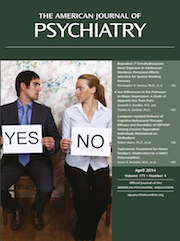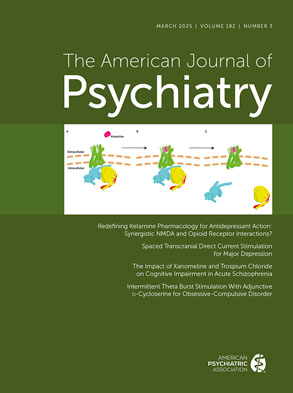Alcohol use disorder is one of the most common psychiatric disorders. It is also among the best understood in terms of its pathophysiology, neuroanatomy, and neurochemistry, largely due to having perhaps the most valid animal models of any psychiatric disorder. It also has some of the most effective pharmacotherapies. There are three Food and Drug Administration (FDA)-approved alcohol use disorder medications in the United States—naltrexone, acamprosate, and disulfiram—and strong research evidence for a fourth, topiramate, plus several other potentially efficacious medications, such as ondansetron, baclofen, and gabapentin. Yet alcohol pharmacotherapy is employed much less frequently than medication for many other major psychiatric conditions, such as depression, schizophrenia, and anxiety disorders. There is an enormous gap between the number of alcohol use disorder patients who would potentially benefit from medications and the number of patients who actually receive medications. For example, a recent study of Veterans Health Administration facilities showed that nationally, only 3% of Veterans Health Administration patients with alcohol use disorder received treatment medications (
1).
Why is alcohol use disorder pharmacotherapy so underutilized? The reasons are likely complex, but among them may be inadequate training and familiarity with these medications and lack of confidence in their effectiveness, which may, in part, be because of the difficulty of predicting who might most benefit from them. Alcohol use disorder patients are a heterogeneous group that probably represents a variety of alcohol use disorder endophenotypes with potentially different disease courses and medication responses. Moreover, different patients may endorse different treatment goals, ranging from abstinence to controlled drinking, and clinicians may not even offer medications to patients whose goal may just be to reduce their alcohol intake.
In this issue of the
Journal, Kranzler et al. (
2) make major contributions toward improving the treatment of alcohol use disorder. Their work moves the field closer to the more accurate targeting of specific medications to specific patients with alcohol use disorder, which could yield more predictable and effective treatment of the disorder and potentially wider adoption of the use of medications. The authors present findings that can be expected to improve and expand alcohol use disorder pharmacotherapy for several reasons. First, they buttress the existing evidence supporting the efficacy of topiramate in the treatment of alcohol use disorder. Second, they broaden the applicability of topiramate treatment to patients who, like many heavy drinkers, may have the goal of reducing their alcohol use, not necessarily attaining abstinence. Third, and of greatest significance, they add to our understanding of the pharmacogenetics of topiramate treatment response by identifying a potential moderator of topiramate effectiveness, which if further validated may help focus the use of this medication on a subgroup of alcohol use disorder patients. Through these contributions, the authors increase the likelihood that alcohol use disorder pharmacotherapy will be used by psychiatrists and others treating this disorder.
The evidence for topiramate’s efficacy in the treatment of alcohol use disorder has already been solidly established (
3), despite the fact that this medication is neither approved by the FDA for the treatment of alcohol use disorder nor likely to gain such approval. Topiramate is available as a generic medication, greatly reducing the motivation of industry to complete the arduous and expensive tasks involved in obtaining a formal FDA indication for this purpose. Kranzler et al. demonstrate the efficacy of topiramate in reducing heavy drinking days and increasing abstinence. Changes in concentration of γ-glutamyl transpeptidase, an objective biomarker of heavy drinking, and in measures of alcohol-related problems were consistent with the self-reported changes in drinking, adding further validity to their findings.
The authors also show that topiramate treatment reduces heavy drinking even in patients whose treatment goal may not have been full abstinence, thereby extending the potential use of this medication to a group of alcohol use disorder patients who may be less likely to be offered pharmacotherapy in the context of routine clinical care.
The study’s most notable finding was the moderating effect on topiramate’s reduction in heavy drinking by rs2832407, a C-to-A noncoding substitution single-nucleotide polymorphism (SNP) in
GRIK1, the gene that encodes the GluK1 subunit of the kainic acid glutamate receptor. Until now, as with most psychiatric disorders, it has been difficult to predict which alcohol use disorder patients will respond to which medication. The authors show that topiramate’s efficacy in reducing the frequency of heavy drinking days is confined to C-allele homozygous carriers of the
GRIK1 gene rs2832407 SNP, whereas there was no difference between topiramate and placebo for A-allele carriers. Although not replicated in this study, this same SNP has been shown to be associated with topiramate side effects; carriers of the A-allele in another study had more severe topiramate-related side effects compared with those who were homozygous for the C-allele (
4). Taken together, these data may allow clinicians to move closer to being able to identify individuals with genetic profiles, such as homozygous C-allele carriers of rs2832407 in
GRIK1, who are more likely to respond positively to topiramate treatment.
Similar pharmacogenetic advances have also been made for other alcohol use disorder treatment medications (
5), as summarized in
Table 1. Furthest along is the research showing the moderating effects of SNPs of the mu-opioid receptor gene (
OPRM1) on alcohol craving, alcohol consumption, subjective intoxication and relapse, and, most important, on the efficacy of naltrexone treatment (
6). Much of the current evidence supports the moderating effects of the Asn40Asp (A118G) SNP of
OPRM1 on naltrexone’s ability to reduce heavy drinking days (
7).
Genetic moderation has also been studied in medications acting on the serotonergic system with regard to their effects on alcohol consumption. Kranzler et al. (
8) previously showed a moderating effect on sertraline treatment response by SNPs in the gene encoding the serotonin transporter protein (5-HTT) and age at onset of alcohol dependence. Similarly, 5-HTT gene polymorphisms are implicated in moderating ondansetron treatment response in early-onset alcohol use disorder (
9). Studies of other medications used to treat alcohol use disorder, such as acamprosate and disulfiram, have also yielded promising findings. For example, acamprosate response has been linked to polymorphisms of the
GATA4 gene (regulating atrial natriuretic peptide) (
10), and disulfiram-related adverse effects have been linked to functional polymorphisms of the dopamine-beta hydroxylase gene (
11).
Although evidence is building, much work remains before these findings can guide clinical practice. To date, the majority of studies of pharmacogenetic moderators of treatment efficacy have been limited to relatively small European American convenience samples. Additionally, some studies have yielded inconsistent results, possibly due to imprecise characterization of subjects and inexact definitions of phenotypes (for example, early-onset compared with late-onset alcohol use disorder). To move clinicians closer to the promise of personalized medicine, pharmacogenetic research in alcohol pharmacotherapy will need to be extended to larger prospective studies of various alcohol-using populations with more precise measures of phenotype.
Kranzler et al. have made important strides toward the goal of predicting treatment response and more specific targeting of patients based on their genetic makeup. This is particularly important for a medication such as topiramate, which has numerous adverse effects. Patients who are less likely to respond could potentially avoid unneeded exposure, while those who are most likely to benefit could ultimately be treated with greater confidence. This study has also addressed the treatment of a new population, those whose goal is to reduce their alcohol use rather than achieve abstinence. The present study therefore moves us closer to a more focused and personalized use of alcohol use disorder medication that targets both the specific genes that patients may carry and the specific treatment goals that they may endorse.

